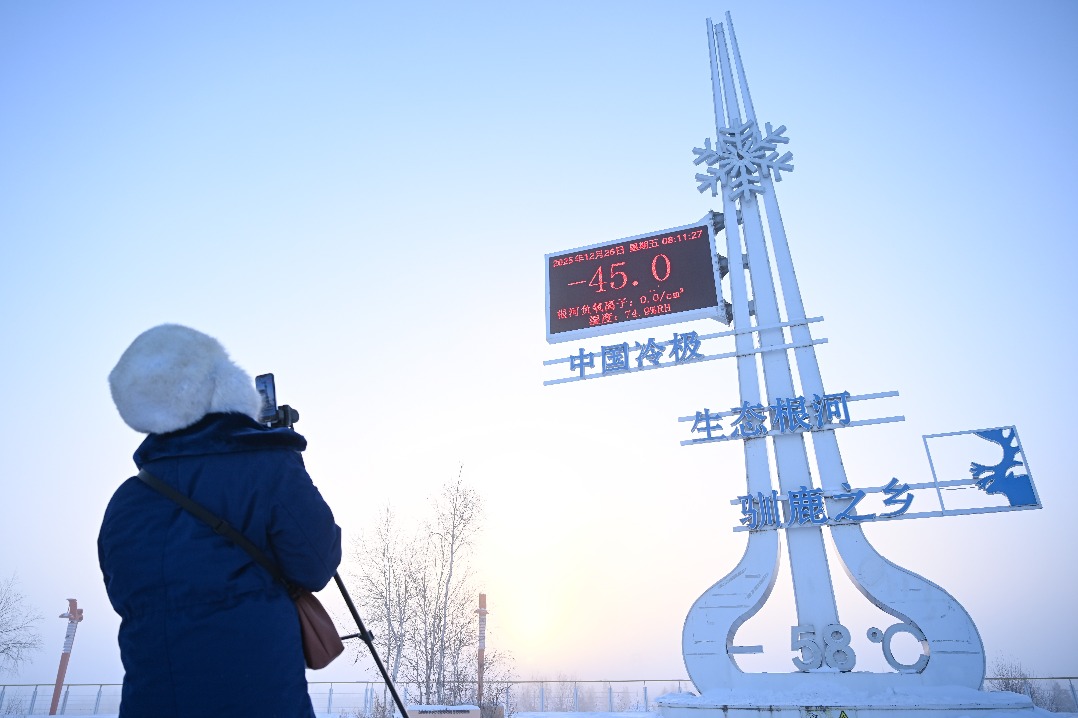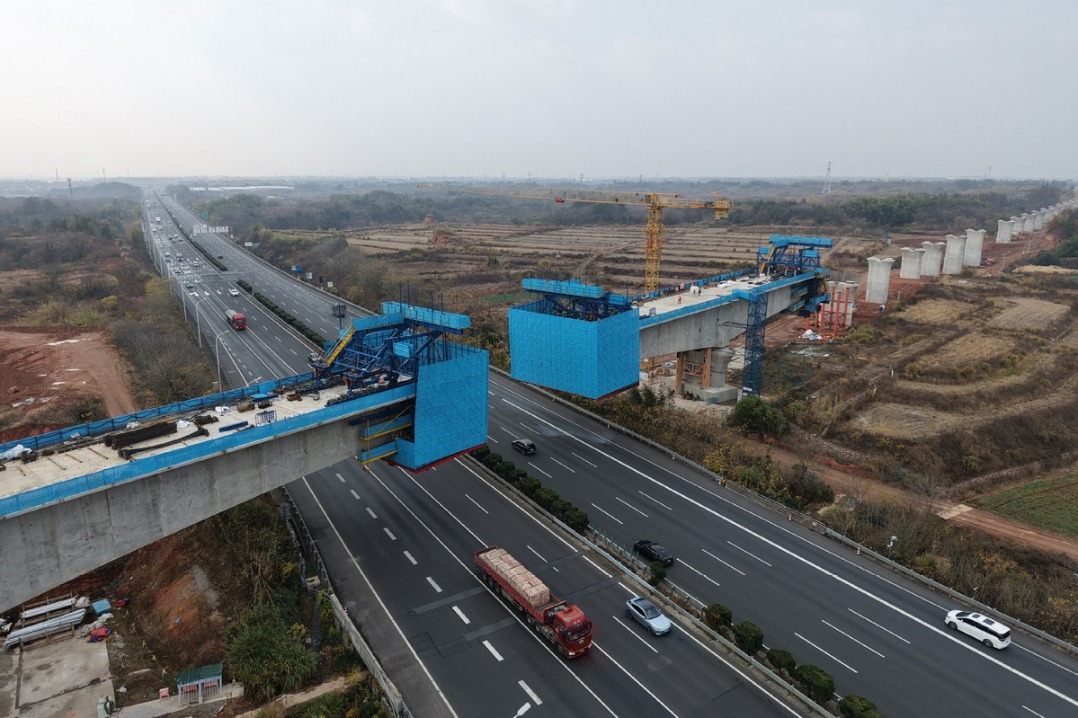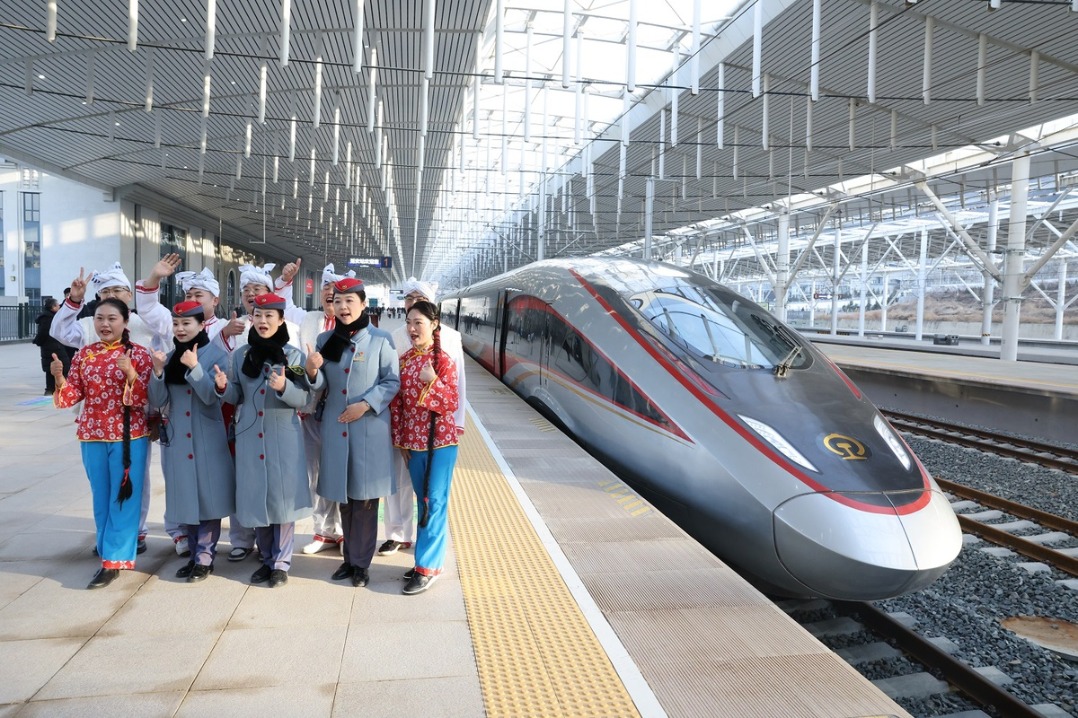Freight volume grows on China-Laos Railway


Freight volume transported via the China-Laos Railway surpassed 10 million metric tons on Monday, about a month before its first anniversary.
The number of categories of goods has increased from about 100 when it opened to about 1,200, according to the China Railway Kunming Bureau. Major exported cargo include cloth material, electronics and chemical fertilizer, while major imported goods include rubber and fruit.
Freight volume has seen stable monthly growth, with October hitting a high of 1.35 million tons, it said. Trade along the railway covers countries such as Laos, Thailand, Malaysia, Vietnam, Cambodia and Singapore.
"The railway is fast and safe, with a large transport capacity, which is why it's favored by traders from home and abroad," said Xu Jiefeng, director of the marketing department of Kunming East Railway Station.
Xu said the expressway opens a convenient and efficient "international logistics golden channel" between China and the Association of Southeast Asian Nations, boosts economic cooperation between the Chinese market and Southeast Asia, and "largely saves transport time and cost".
So far, 25 provincial-level regions in China have operated international freight trains on the railway. The average number of daily cross-border trips has increased from two to 12. Cross-border cargo transportation volume has reached 1.8 million tons, with a total value of over 12 billion yuan ($1.7 billion).
The Kunming branch of Shanghai Rencheng SCM Co mainly exports textiles to Southeast Asian markets such as Laos, Myanmar and Thailand along the expressway.
Yang Jie, a manager at the company, said that in the past they mainly relied on highway transportation, which would be affected by COVID-19 outbreaks.
"The China-Laos Railway, owing to its quick customs clearance and low damage to cargo, not only improves transport efficiency, but also decreases cost by about 30 percent," she said.
She added the epidemic has affected many cross-border enterprises, and the railway works as a "stable bridge" to link clients worldwide. She said that the company's export volume was much larger than before the epidemic emerged, thanks to the railway's fast speed and controllable delivery time.
Asia-Potash International Investment (Guangzhou) Co in Guangdong province, invested 3.2 billion yuan to build a potash fertilizer production base in Laos whose production is expected to reach 3 million tons by 2024.
Liu Bingyan, deputy general manager of the company, said they have transported about 10,000 tons of potash fertilizer back to China on the railway to serve agriculture in southwestern regions.
She said the company will increase its transport volume and is planning more collaboration with the expressway.
Yunnan Mingsheng Logistics Co exports about 3,000 tons of steel and imports 100,000 tons of iron ore monthly along the expressway.
Mu Xiaoxiao, a manager at the company, said that in the past they had to track the safety of the trucks and goods on the road, but now they don't need to worry after delivering cargo at the railway station or picking it up at an arranged time.
Jiang Zhi, a manager at Xishuangbanna Hongyu Logistics Co, said the company has transported about 260,000 tons of cargo like manganese ore, iron ore, Laotian beer, coal and cement on the railway.
He said the expressway helps China connect with Southeast Asian countries, allowing a lot of cargo to be transported on time. He sees great potential for the expressway.
"With the expanding influence of the railway, freight volume will increase, and the growing logistics will drive the local economy to benefit people's livelihoods."
The China-Laos Railway started operation on Dec 3 last year and stretches 1,035 kilometers, linking Kunming, capital of Yunnan province, with the Laotian capital Vientiane. It takes 26 hours to travel between the cities.
Li Wenfang in Guangzhou contributed to this story.
- Shanghai unveils steps to build sci-tech innovation corridor in Yangtze River Delta
- Xiangchao concludes with Yongzhou claiming championship
- Answers
- CPC leadership meeting urges steadfast implementation of eight-point decision on improving conduct
- Ethiopian coffee trading center unveiled in Zhuzhou
- Mouse births pups after space mission, paving way for future research





































